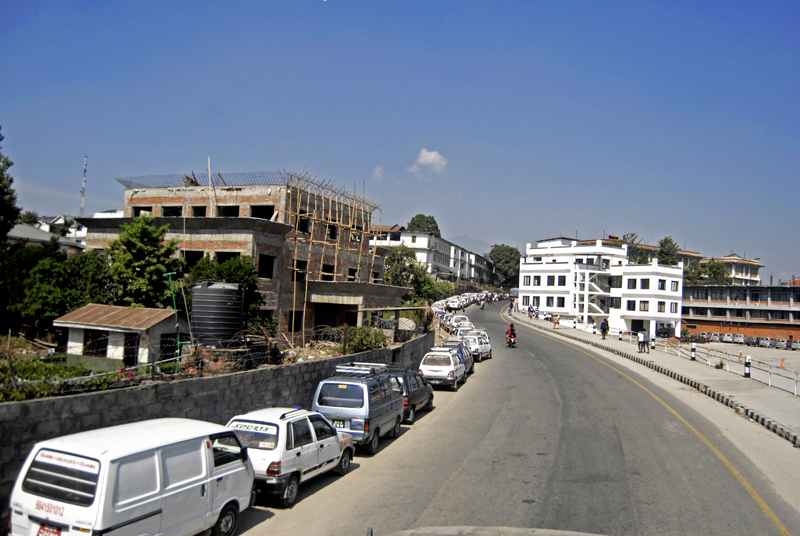Government explores alternatives to ease fuel supply
Kathmandu, March 2
Almost three weeks after Nepal Oil Corporation reopened refilling facility for private vehicles, the serpentine queues of four- and two-wheelers waiting to get fuel in front of service stations do not seem to be getting any shorter.
Though NOC has ramped up the supply, fuel stations say it is not enough to normalise the situation.
“The supply situation can be normalised in the Kathmandu Valley only if NOC dispatches 700,000 litres of petrol and 800,000 litres of diesel every day for a week,” claimed Lilendra Prasad Pradhan, president of Nepal Petroleum Dealers’ National Association.
NOC, on the other hand, says it is supplying optimum quantity of fuel and that the short-supply is due to Indian Oil Corporation supplying only 70 per cent of fuel, including liquefied petroleum gas, when compared to the supply during normal times. IOC is the sole supplier of NOC.
Despite repeated attempts to verify NOC’s claim with IOC, the latter did not respond to The Himalayan Times.
Meanwhile, the Ministry of Supplies has floated a new distribution mechanism to ease the supply of fuel.
“Seeing no significant improvement in supply situation though we have been distributing 450,000 litres of petrol daily (against the daily demand of 350,000 litres), we are mulling over allowing refilling facility to private vehicles every alternate day from all fuel stations from early morning,” Minister for Supplies Ganesh Man Pun said today.
“If we start giving fuel from early morning, vehicle owners would not have to queue till wee hours and we would be able to supply double the quantity than what is being given from each fuel station.”
Earlier, Minister Pun had instructed Thankot depot of NOC to dispatch fuel tankers to service stations in the first half of the day. However, the depot has been dispatching tankers only in the second half of the day.
“It takes at least three hours to complete all preparatory works like quality test of fuel,
bank’s process, and entry of tankers in software of NOC before tankers can be dispatched, which means the first tanker can only be dispatched around noon,” said Netra Prasad Kafle, chief of Thankot depot.
He said checking for leakages and the quantity of fuel being ferried also consumes a lot of time.
NOC, during the closure of Birgunj route, had asked Bhairahawa and Biratnagar depots to dispatch certain quantity of fuel mandatorily to Kathmandu on a daily basis.
The order was lifted after the Raxaul depot of IOC started supplying fuel along with the reopening of the Birgunj trade route after four-and-a-half months on February 8.
Minister Pun said it was not possible to continue asking the Bhairahawa and Biratnagar depots to keep sending fuel to the Valley. “We have to manage smooth supply in other parts of the country as well,” he explained.
In this scenario, Minister Pun is optimistic about the option of supplying double the quantity of fuel to service stations and only opening refilling facility to private vehicles on alternate days.
“Since the fuel would be distributed from early morning, the government market monitoring team will also be able to strictly monitor the stations,” he said.
Currently, most stations start distributing fuel in late afternoon till wee hours.
Per day consumption of petrol and diesel across the country during normal times hovers around 1,100 kl and 2,600 kl, respectively, according to NOC.
The Kathmandu Valley consumes around 32 per cent of petrol and 20 per cent of diesel consumed across the country.






